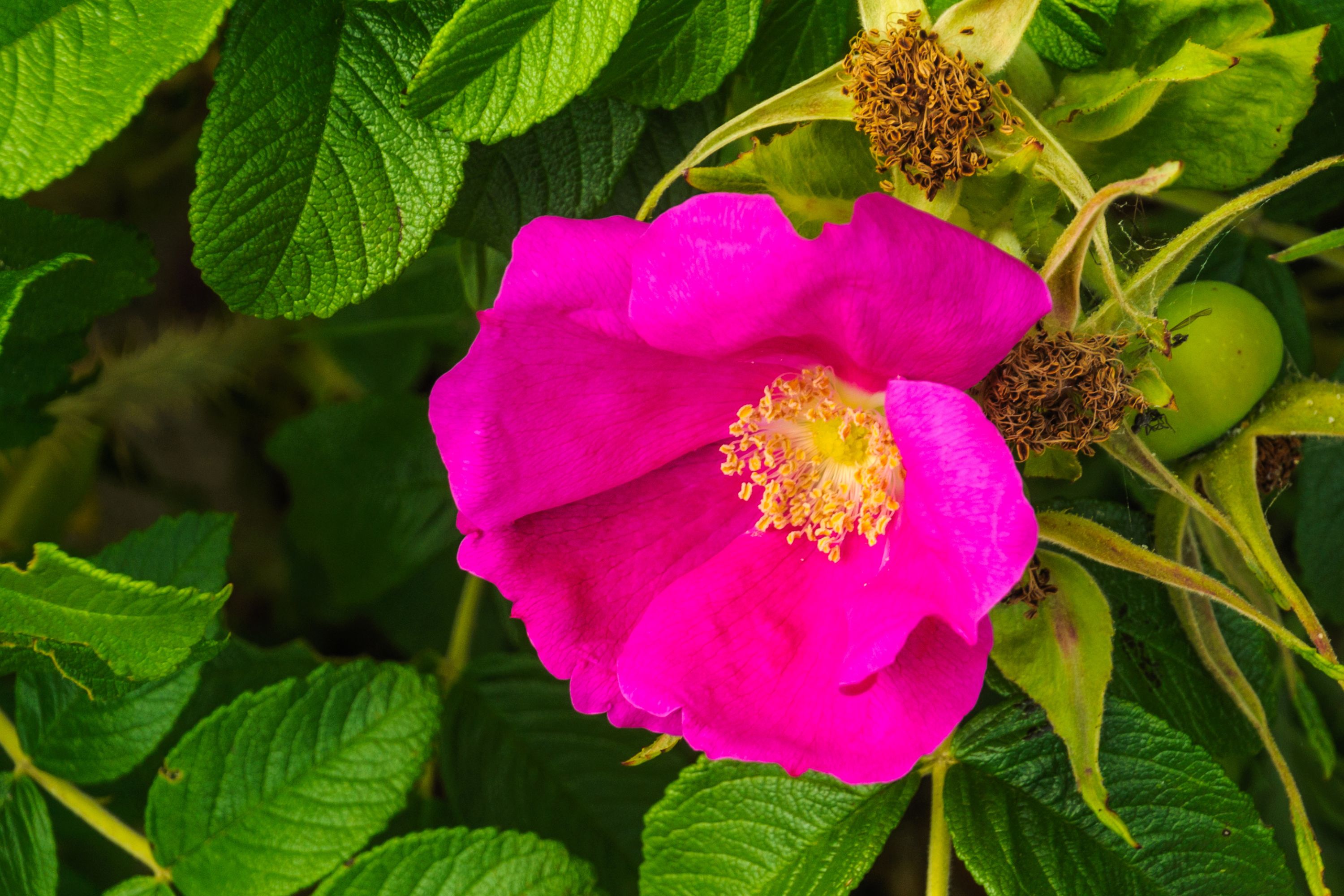Rugosa rose
(Rosa rugosa)

Description
Rosa rugosa is widely used as an ornamental plant. It has been introduced to numerous areas of Europe and North America. It has many common names, several of which refer to the fruit's resemblance to a tomato, including beach tomato or sea tomato; others include saltspray rose, beach rose, potato rose and Turkestan rose. In parts of the US the fruits are also occasionally called beach plums, causing confusion with the plant properly bearing that name, Prunus maritima. Varieties of this species are sold in nurseries. In cultivation it has been cross-bred with other roses. It is valued for its attractive flowers, and it is often used to create hedges and windbreakers. It can control erosion and is planted along highways in Germany and Denmark. a rose, beach rose, Japanese rose, Ramanas rose, or letchberry) is a species of rose native to eastern Asia, in northeastern China, Japan, Korea and southeastern Siberia, where it grows on beach coasts, often on sand dunes. It should not be confused with Rosa multiflora, which is also known as "Japanese rose". The Latin word "rugosa" means "wrinkled", referring to the wrinkled leaves. Rosa rugosa is a suckering shrub which develops new plants from the roots and forms dense thickets 1–1.50 m tall with stems densely covered in numerous short, straight prickles 3–10 mm long. The leaves are 8–15 cm long, pinnate with 5–9 leaflets, most often 7, each leaflet 3–4 cm long, with a distinctly corrugated (rugose, hence the species' name) surface. The leaf is elliptical in shape with a rounded base or broadly cuneate with a leather feel, dark green top. The back of the leaf is composed of a green-grey colour with hair along the veins. The leaf margin is composed of teeth along the edges and is crenate-serrate. The flower has five petals that are usually 6-9 cm in width. The flower is composed of 200-250 stamens per flow and vary in style. The flowers are pleasantly scented, dark pink to white (on R. rugosa f. alba (Ware) Rehder), 6–9 cm across, with somewhat wrinkled petals; flowering occurs in spring. The edible hips, which resemble cherry tomatoes, are large, 2–3 cm diameter, and often shorter than their diameter, not elongated; in late summer and early autumn the plants often bear fruit and flowers at the same time. The leaves typically turn bright yellow before falling in autumn.
Taxonomic tree:







